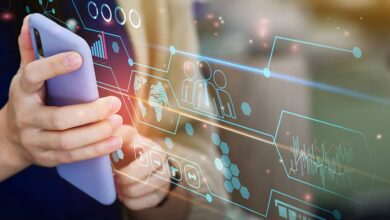If there’s one thing we’ve learned about AI in the previous several years, it’s good at local jobs. Computer vision isn’t always about training computers to view the environment as we (humans) do. The goal is to allow computers to record, evaluate, and learn about the human environment.
AI’s usefulness comes from applying computer intelligence skills like object identification, movement detection, and monitoring or counting objects/people to the correct application. It’s no surprise that AI video surveillance and sensor data have become a hotspot for new services across sectors.
While we frequently think about real-time AI security camera systems in terms of security or surveillance, the ai video surveillance industry is developing due to a rising number of use cases. Medical apps, sports analysis, intelligent factories, traffic control, and even agricultural drones are among them.
Intelligent technology has resulted in a new generation of “smart” use cases. In “smart cities,” AI security camera systems and artificial intelligence assess traffic patterns and alter traffic signals to enhance vehicle flow, decrease congestion and pollution, and improve pedestrian safety. “Smart factories” use AI to do specific jobs, such as identifying defects or irregularities in a manufacturing line in real-time and changing operations to eliminate mistakes. ai security camera systems may be highly successful at quality assurance, and they can also save a lot of money by automating and detecting faults sooner.
Risk mitigation is critical for safety and security
In 2022, the global use of AI video surveillance technologies is expected to reach new highs. Video surveillance, which is used to improve safety and security, is expected to be a 69.1 billion $ market by 2026, with a CAGR of 10%.
This is partly due to the industry’s expansion outside the conventional methodology of solely monitoring critical infrastructure. Implementing next-generation technology is becoming an increasing priority for AI video surveillance.
Deep learning, AI analytics, video analytics, cloud computing, and edge computing enhance the capabilities of video surveillance software products and use-cases, including biometric-based physical access control, real-time watchlisting, and post-forensic analytics.
Different methods to employ AI video surveillance
Today, 68 percent of businesses employ video surveillance systems for security and operational efficiency. This appears to be a sensible strategy in terms of security.
Below are some suggestions on how businesses might employ video surveillance technology to best fulfill their own unique needs:
Incorporate and evaluate clever video analytics insights
By adding intelligence to your current video infrastructure, you can make your cameras smarter.
The level of AI or intelligence embedded into current CCTV cameras sometimes perplexes businesses looking into video monitoring and surveillance solutions. Embedded processors, which effectively add “brains” to the camera’s pictures, make today’s CCTV cameras far more intelligent than their predecessors.
Keeping the bad guys at bay
Persons of interest (POIs) may be identified in real-time with live face recognition using video surveillance and cognitive data analytics, allowing your security team to respond quickly to threats while safeguarding the privacy of bystanders.
Security and operations teams are driven by the need to recognize and respond to risks to safety while also improving the customer experience. Their performance is dependent on precise and quick identification of persons. Most software that automates the detection of persons on watchlists underperforms in real-world situations, and the human eye alone is imperfect.
Enhance worker safety in general
Video surveillance isn’t simply for monitoring external audiences. It may also be used to ensure internal workplace safety, that equipment is functioning correctly, and that places are clean and clear of debris or other possible hazards. Changes in circumstances can be detected, and notifications for possible problems can be sent. For example, security personnel can be notified of potential slip and fall accidents at retail outlets.
The next level of protection is behavior recognition
Fall detection, drowning, human behavior analysis, and other irregularities in behavioral patterns may all be detected via video surveillance. For example, among older persons over 65, falls are one of the most significant health dangers, impacting more people than strokes and heart attacks combined. Furthermore, the Centers for Disease Control and Prevention (CDC) reports that falls are rising among the elderly in the United States. The death toll is expected to climb as the population ages.
Conclusion
In summary, ai video surveillance technology is a vital instrument for protecting and preserving the people, places, and things we need to save. Vision AI-driven software and AI training data set for security is a powerful and welcome addition to any security team, with a quick return on investment in increased efficiency, safety, loss prevention, and peace of mind. Companies like Anolytics.ai, and Cogito Tech provide training data set for security and surveillance at affordable prices.





